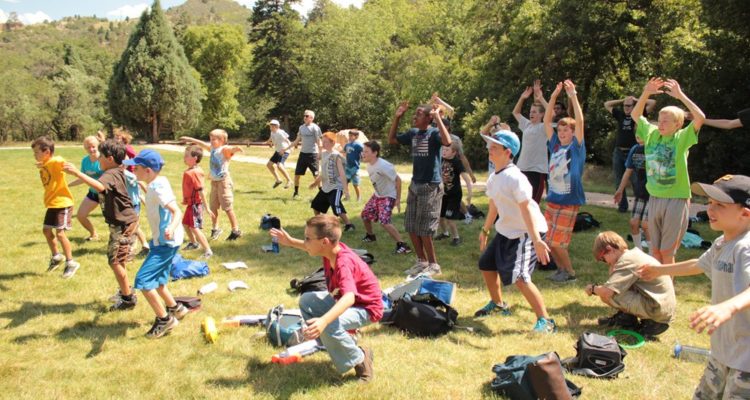As children, we stayed in good physical shape because we always were playing in the yard, riding bikes, jumping rope, swimming or climbing trees. We stayed in good mental shape because our play provided a workout for our imaginations.
We became the characters in our forts, the dolls in our dollhouses, the soldiers on our battlefields, the sports heroes in our stadiums. We lived all that we imagined as we vicariously placed ourselves in the situations we’d imagined.
Then we grew up and shelved our imaginations so we could engage the real world. Let me confess: This article is more than a compilation of best-ever game ideas. In many ways, it’s a cry for all of us to develop richer imaginations, tapping into our God-given creativity. I believe play is necessary for good mental and physical health. Play relieves stress, boosts self-esteem and builds community. I’ll bet you need all three of those play benefits in your life. I know I do.
Many games that formerly were played for fun have evolved into professional sports. In spite of what a nation of couch potatoes tells you, watching someone play a sport is not the same thing as playing a game yourself. Part of what distinguishes a true game from a professional sport is how much fun the participants are having in the process. When was the last time you saw a professional athlete laugh during a game? Amateurs do it all the time! It happens so often when friends get together; it’s not unusual for a game to be suspended until the laughter subsides and participants can resume play.
Games are not an end in themselves. They are one component in a healthy youth ministry. I’ve always believed the best adult youth leaders are two-thirds adult and one-third kid. Don’t reverse this equation or you’ll quickly be in high weeds! Don’t forget to honor that third of you that’s still looking to call up some friends to go out and play. It’s your ticket to building relationships with teenagers and having a blast as you do.
We need to have fun and play games because God commands us to rest from work, to break the pattern of work and its grip on our daily lives, schedules and thinking. Those of us who value play have a biblical basis for seeing play as important: “For everything there is a season, and a time for every matter under heaven…a time to weep, and a time to laugh; a time to mourn, and a time to dance…” (Ecclesiastes 3:1-6).
Hang on to those giggles and the laughter coming from your youth room. Count yourself fortunate that your kids can be kids in a society that forces them to grow up so quickly. We all will need those memories someday when we face those experiences in life that cause us to pray as Jesus did in the garden.
Some of our deepest theological thinkers also have been fun to be around and enjoyed play…or wished they did.
Martin Luther wrote, “It is pleasing to the dear Lord whenever thou rejoicest or laughest from the bottom of thy heart.” Sounds like a guy I’d want at the next youth retreat during game time.
People who’ve learned to play—and play well with others—are ahead of the pack. “I would rather be ruled by men who know how to play than by men who do not know how to play,” G.K. Chesterton wrote. “The playground is a place for humanizing those who might otherwise become tyrants.”
In his book Surprised by Joy, C.S. Lewis wrote, “The compulsory games had banished the element of play. The rivalry was too fierce, the prizes too glittering, the ‘hell of failure’ too severe.” C.S. Lewis possessed a heightened sense of play and fun throughout his life, but because he felt inadequate, he didn’t participate in games while young.
No less an astute theologian than St. Thomas Aquinas argued that a “Christian can play and romp to the glory of God as much as he can eat and work to the glory of God.” In Aquinas’ commentary on Aristotle, Aquinas wrote: “As a man needs from time to time to rest and leave off bodily labors, so also his mind from time to time must relax from its intense concentration on serious pursuits; this comes through play.”
The Best Games
The best games are those that fit your group’s culture and interests. Just because something was a big hit at another youth ministry on the other side of the country doesn’t mean it’ll succeed in yours. Some questions to determine which game will suit your group best include:
• How many people are expected?
• What equipment or supplies are required?
• What is the age range of the students?
• What are the physical abilities of the students?
• Where will the game take place?
• What time of day will you play?
• How much space will you need and have available to use?
• How much time will you have?
• What is the anticipated weather to be like?
The best games are fun to describe, fun to watch and fun to play. They require little or no skill so that everyone is on equal footing. The best games don’t require a lot of equipment and don’t have a lot of complicated rules. They don’t leave kids feeling like losers or embarrass the overweight, self-conscious and shy participants. The best games bring people together so that when the game is over, the players are better friends than when they started.
The best games are ones in which students don’t get hurt. Most youth workers rarely consider safety issues. Many times games are planned with no thought given to potential dangers. However, a trip to the emergency room with a student who was injured during a youth group activity will change attitudes toward safety. Safety matters. Put it first.
Being safe does not equal not having much fun. A few minor changes or adjustments can turn a risky game into a safe one without reducing the level of fun. Obviously games that involve motorized vehicles, slippery surfaces, protruding objects, heavy physical contact, turbulent water and hitting people with any type of projectile deserve special attention before you decide to proceed. Any game is wrong if you know someone will get hurt. The safety-smart youth leader anticipates danger. Bring your great game idea to life with a simulated test run, using your staff as crash-test dummies. As you play, you will be able to identify the danger points and make changes before you present the game to the youth group.
The Best Game Leaders
The best game leaders introduce a game in a way that arouses interest and creates anticipation. They explain the game quickly and simply. Don’t intellectualize a game; most questions are answered as kids play the game itself. You simply can’t anticipate all possible game scenarios, so don’t try to give a comprehensive explanation. Make sure everyone understands the basic point or purpose of the game; then get started. Your group wants to play, so detailed descriptions are futile. Describe in the fewest words possible what’s to be done and what’s to be avoided.
The best game leaders put students in their playing positions first and explain the game (without using the word game, which is a turnoff to teens); then let them play. For example, say, “Before we get started today, I want everyone on this side of the room to scoot one foot that way while our staff runs this rope between you.” Ten minutes later, kids will be looking at each other saying, “Hey, we’re playing games! Cool!”
The best game leaders encourage participation without forcing it. Some students think they are not good enough to play. They are afraid of ridicule and embarrassment. Some students may feel uncoordinated or unskilled. Allow students to observe as long as they’re not disturbing those who are participating. Some students have had negative experiences playing games in the past, so be gentle with them but not patronizing.
The best game lea




